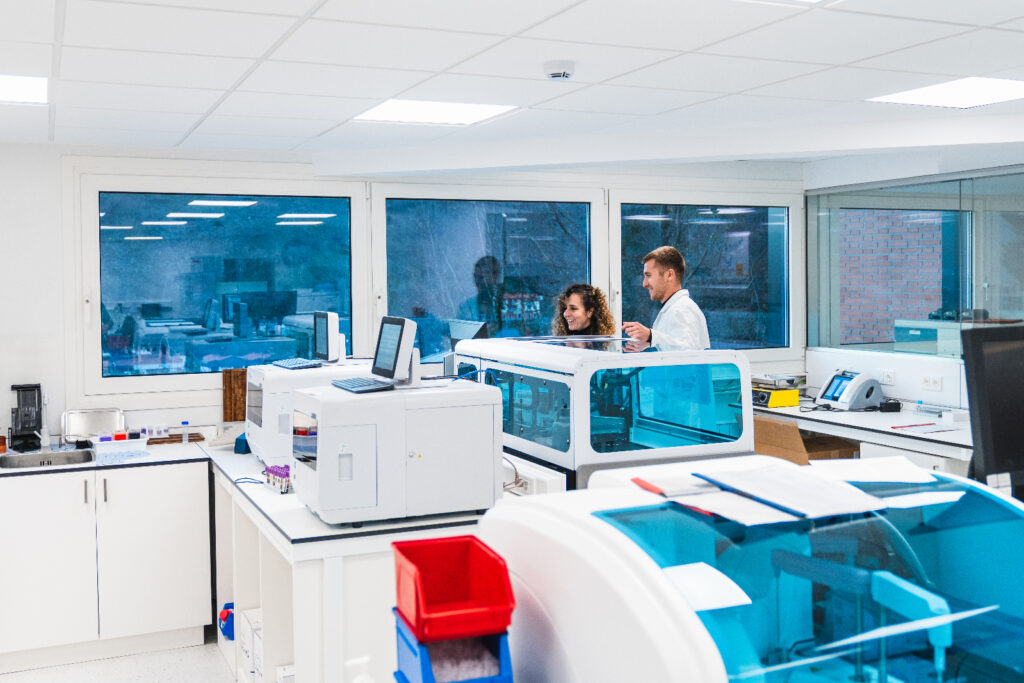In a major advancement for treating neovascular age-related macular degeneration (nAMD), the investigational gene therapy ABBV-RGX-314 of Regenxbio Inc. (RGNX) has shown promising results in a pioneering bilateral dosing clinical trial.
Presented at the American Academy of Ophthalmology (AAO) by Dr. Arshad M. Khanani, this groundbreaking study marks the first time gene therapy has been trialed in both eyes for nAMD patients, aiming to address the chronic nature of this vision-threatening condition.
With the potential to reduce frequent anti-VEGF injections, ABBV-RGX-314 could transform patient care by offering long-lasting therapeutic effects through a single subretinal injection.

CHECK THIS OUT: Lakeside Holding (LSH) Acquires Hupan Pharmaceutical to Enter China’s Medical Logistics Market.
The Burden of nAMD and the Promise of Gene Therapy
Neovascular age-related macular degeneration is a chronic eye disease that progressively damages central vision due to abnormal blood vessel growth under the retina.
Current treatment typically requires repeated intravitreal anti-VEGF (vascular endothelial growth factor) injections, which, while effective, place a considerable burden on patients and healthcare systems.
ABBV-RGX-314 introduces a novel gene therapy approach, allowing retinal cells to produce an anti-VEGF protein autonomously, reducing the need for frequent injections.
This innovative treatment aims to improve patient adherence, outcomes, and quality of life by providing a more sustainable approach to nAMD management.
Efficacy and Safety in Bilateral Dosing of ABBV-RGX-314
The bilateral dosing sub-study of ABBV-RGX-314 has produced encouraging results. Nine months post-treatment, 78% of the second treated eyes in the study remained injection-free, and all participants required either zero or just one supplemental injection.
These findings demonstrate ABBV-RGX-314’s potential for a durable treatment effect in both eyes, a key advantage for patients with bilateral nAMD.
By enabling a sustained reduction in treatment burden, ABBV-RGX-314 could greatly improve quality of life for nAMD patients who otherwise face the challenges of regular anti-VEGF injections.
The study also established a positive safety profile for ABBV-RGX-314. No drug-related serious adverse events (SAEs) were observed, which is critical for new ocular therapies.
Mild adverse events in the second treated eyes, such as peripheral retinal pigment changes and conjunctival hemorrhage, resolved quickly and without complications.
Importantly, no cases of intraocular inflammation, chorioretinitis, vasculitis, or hypotony were reported.
The favorable tolerance seen across both the first and second treated eyes reinforces ABBV-RGX-314’s suitability for broader application, especially for advanced nAMD cases requiring treatment in both eyes.
Sustained Visual and Retinal Health: BCVA and CRT Findings
Beyond reducing injection frequency, ABBV-RGX-314 demonstrated stability and improvement in best-corrected visual acuity (BCVA) and central retinal thickness (CRT) among participants.
The treated eyes experienced stable or enhanced visual acuity and maintained healthy retinal structure over nine months.
Additionally, the levels of therapeutic protein in treated eyes were consistent with those in the initially treated eye, indicating that ABBV-RGX-314 can provide a durable therapeutic effect.
The stability in BCVA and CRT highlights the gene therapy’s potential for lasting efficacy with minimal intervention, advancing nAMD treatment beyond traditional injection regimens.
ABBV-RGX-314’s Potential to Transform nAMD Treatment
The implications of ABBV-RGX-314 for nAMD treatment are significant. By reducing the frequency of required injections, this gene therapy could reshape the standard of care, allowing patients to manage their condition with fewer clinical visits.
This reduction in treatment burden is particularly relevant in nAMD, where the current intensive injection schedule can be challenging for patients to maintain.
ABBV-RGX-314 offers a low-maintenance, sustainable option that may enhance treatment adherence, improve patient outcomes, and boost overall quality of life.
The success of ABBV-RGX-314 also reflects a broader trend in gene therapy innovation within ophthalmology, as sustained, long-term treatments are increasingly necessary for chronic eye conditions.
By utilizing an AAV8 vector to deliver an anti-VEGF transgene to the retinal pigment epithelium (RPE), ABBV-RGX-314 exemplifies a cutting-edge approach in gene therapy.
This study’s successful bilateral application suggests that researchers could adapt gene therapies like ABBV-RGX-314 for other ocular conditions requiring long-term intervention, advancing gene therapy’s role in real-world treatment outcomes.
Looking Forward: ABBV-RGX-314’s Role in Future Treatment Landscape
As ABBV-RGX-314 continues its clinical development, investors and stakeholders should monitor upcoming data on its long-term efficacy and safety in larger patient cohorts.
ABBV-RGX-314 has shown potential to reshape the management of nAMD, offering a unique solution that could gain regulatory approval and redefine treatment standards in ophthalmology.
The gene therapy’s ability to provide low-maintenance, durable treatment may extend beyond nAMD, representing a valuable therapeutic model for other chronic ocular diseases.
READ ALSO: FDA Clears CEL-SCI’s Multikine Study for Head and Neck Cancer and Aethlon (AEMD) Reports Q1 2024 Results and Advances Cancer and Virus Treatment Trials.








